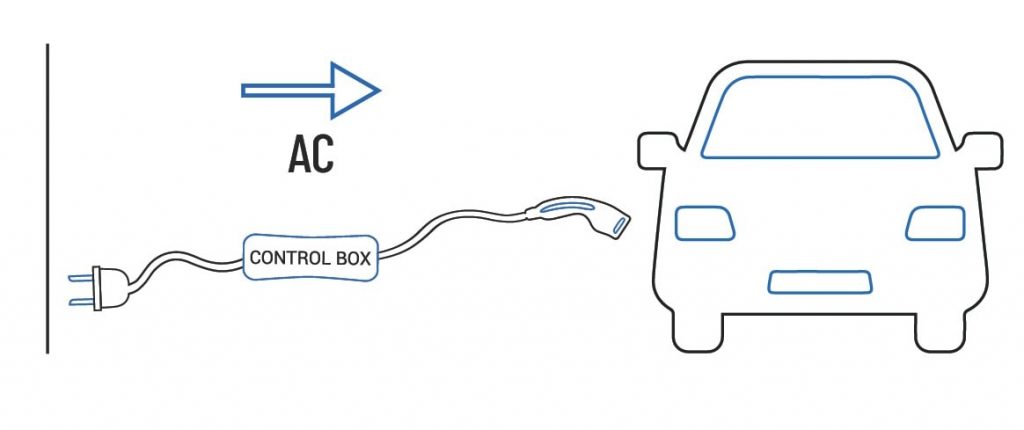EV Charger Modes For Electric Car Charging
EV Charger Modes For Electric Car Charging
Nowadays there are more and more electric vehicles on our roads. However around the world of the electric there is a veil of mystery due to technicalities that first-time users have to face. Which is why we decided to clarify one of the main aspects of the electric world: the EV charging modes. The reference standard is IEC 61851-1 and it defines 4 charging modes. We will see them in detail, trying to sort out the clutter around them.
Mode 1
It consists in the direct connection of the electric vehicle to the normal current sockets without special safety systems.
Typically mode 1 is used for charging electric bikes and scooters. This charging mode is prohibited in public areas in Italy and it is also subject to restrictions in Switzerland, Denmark, Norway, France and Germany.
Furthermore it is not allowed in the United States, Israel and England.
The rated values for current and voltage shall not exceed 16 A and 250 V in single-phase while 16 A and 480 V in three-phase.
Mode 2

Unlike mode 1, this mode requires the presence of a specific safety system between the point of connection to the electrical network and the car in charge. The system is placed on the charging cable and is called the Control box. Typically installed on portable chargers for electric vehicles. Mode 2 can be used with both domestic and industrial sockets.
This mode in Italy is allowed (like Mode 1) only for private charging while it is prohibited in public areas. It is also subject to various restrictions in the United States, Canada, Switzerland, Denmark, France, Norway.
The rated values for current and voltage shall not exceed 32 A and 250 V in single-phase while 32 A and 480 V in three-phase.
Mode 3
This mode requires that the vehicle is charged through a power supply system permanently connected to the electrical network. The Control Box is integrated directly into the dedicated charging point.
This is the mode of wallboxes, commercial charging points and all automatic charging systems in alternating current. In Italy, it is the only mode allowed to charge the car in public spaces in alternating current.
Charging stations operating in mode 3 usually allow charging up to 32 A and 250 V in single-phase while up to 32 A and 480 V in three-phase, even if the legislation does not set limits.
Examples of charging in mode 3 are two charging systems develope. Although the first is manual and the second automatic, both are designed to operate in mode 3.
Mode 4
It is the only charging mode that provides direct current. This charging mode requires a current converter external to the vehicle to which connect your charging cable. Usually the charging station is much more voluminous than a simple one, this is due to the presence of the converter that transforms the current from AC into DC before passing through the charging cable towards the electric car.
For this mode there are two standards, one Japanese and one European called respectively CHAdeMO and CCS Combo. Charging stations that charge in mode 4 allow charging up to 200A and 400V even if the legislation does not specify a maximum limit.
Although there are 4 regulated charging modes, there are still many steps to be taken in favor of electric mobility. The electric vehicle today can be considered both as an electrical device and as a simple vehicle. This duality makes standardization in electric mobility even more complicated and difficult. Precisely for this reason the CEI (Italian Electrotechnical Committee) formed a Technical Committee CT 312 “electrical and electronic components and systems for electric vehicles and/or hybrids for electric road traction” in 2010. An effort is therefore required from all the main standardization bodies to establish complete standards that clarify the characteristics and technical aspects of electric vehicles.
It is easy to suppose that electric mobility has all the credentials to be able to change the paradigm of both private and public transport, it is difficult to establish how long it will take place.